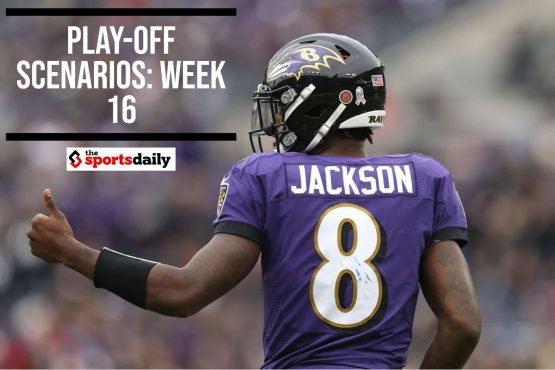Many are aware of Michael Lewis’ 2003 novel, Moneyball: The Art of Winning an Unfair Game. The book, which was later turned into a Oscar-nominated movie, introduced the general public to the world of Sabermetrics. Lewis followed the story of the 2002 Oakland Athletics’, who used on (at the time) non-traditional statistics like on-Base Percentage and slugging Percentage to win an MLB-record 19 straight games and reach the playoffs.
In Travis Sawchik’s Big Data Baseball, fans of Moneyball have the perfect sequel.
[protected-iframe id=”bd38781566055d5f3fd560cb33a8c4a5-114320562-107853376″ info=”//ws-na.amazon-adsystem.com/widgets/q?_encoding=UTF8&ASIN=1250094259&Format=_SL250_&ID=AsinImage&MarketPlace=US&ServiceVersion=20070822&WS=1&tag=burnin09-20″ ]While Moneyball documented the early stages of Sabermetrics’ influence in MLB front office’s, Sawchik’s novel follows the next wave of advanced statistics and out-of-the-box thinking to impact the game. Largely, Sawchik tells the story of how the Pittsburgh Pirates revived their organization using novel concepts like that derived from the massive amounts of info tracked in the modern game. By relying on pitch framing, defensive shifting, and PITCHf/x, the Pirates were transformed into a playoff-caliber team seemingly overnight.
As interesting as learning about the statistics and their usage, that is only one aspect of the story. Perhaps even more important is Sawchik’s description of how the ideas were developed and almost always resisted. Not by coincidence, both Moneyball and Big Data Baseball were born out of frustration, and perhaps even desperation.
In Big Data Baseball, Sawchik paints the bleak picture the Pirates were facing: GM Neal Huntington and Manager Clint Hurdle were both faced with the prospect of losing their jobs, after Pittsburgh’s 20th consecutive losing season in 2012. Just like Billy Beane‘s Oakland teams, the Pirates needed to improve on a budget, and necessity bred innovation.
However, as desperate as Hurdle and Huntington were, incorporating new methods was anything but smooth. Veterans like A.J. Burnett pushed back against the shift, and were ever-skeptical of MIT graduates traveling with the team. Reading how the Pirates combated the resistance gives perspective on the difference between on paper concepts and executing them in real life.
As much as the story is about data and analytics, part of the story is just about creative thinking. One of the more interesting parts of the novel is the story of how Pittsburgh identified and signed Starling Marte for just $80,000. Many scouts overlooked Marte because he couldn’t play shortstop adequately, but as Sawchik put it, Pittsburgh scout Rene Gayo focused more on what Marte could do than what he couldn’t. As a result, the Pirates got a star-level player for a huge discount.
All things considered, Big Data Baseball is fascinating, and a must-read for anyone curious about baseball’s analytic movement. Sawchik served as Pittsburgh’s beat writer while developing the novel, giving a behind-the-scenes look at everything that went into the overhaul of the organization’s philosophy.
Most importantly, Sawchik’s story brings analytics into the modern-age for the general public. Baseball has blown past the days of on-base percentage being novel. Rather, much like the rest of the world, baseball is ever evolving, guided by the continued collection of big data. In fact, since Big Data Baseball was written, things like spin-rate and swing plane have grown increasingly more important in front offices. These aren’t discussed in the book, however, already making the story slightly dated.
Sawchik is a talented writer, and his ability to capture all the different facets of the organization and their philosophy is appreciated. In the book, you’ll hear from the players, the coaches, the analysts, the scouts, and the front office. Give the book a read to gain understanding of not only new-wave baseball data, but also how a well-functioning organization is run.
[protected-iframe id=”6a1829101abf51126d51f643bd85afb3-114320562-107853376″ info=”//ws-na.amazon-adsystem.com/widgets/q?ServiceVersion=20070822&OneJS=1&Operation=GetAdHtml&MarketPlace=US&source=ss&ref=as_ss_li_til&ad_type=product_link&tracking_id=burnin09-20&marketplace=amazon®ion=US&placement=1250094259&asins=1250094259&linkId=5843723ce685d1f1cbc890de9b59d45c&show_border=true&link_opens_in_new_window=true” frameborder=”0″ style=”width:120px;height:240px;” scrolling=”no”]Add The Sports Daily to your Google News Feed!







